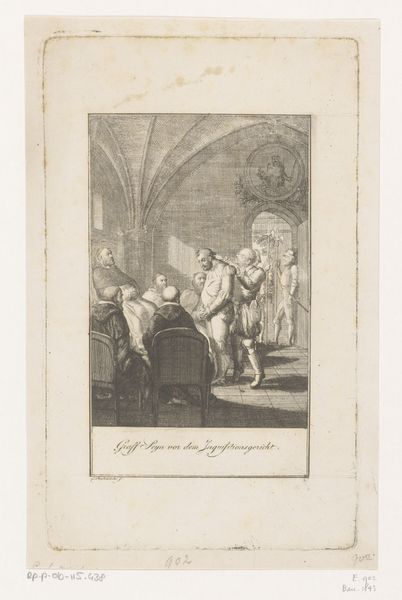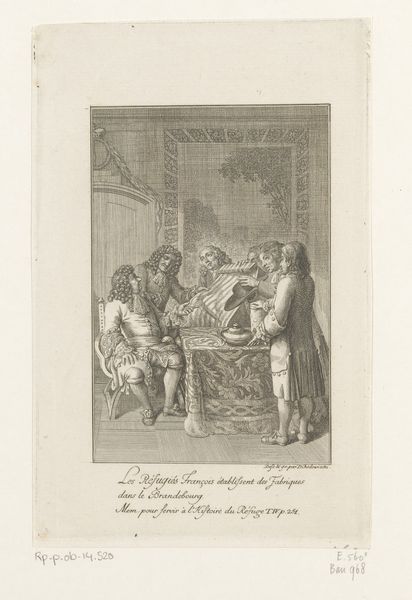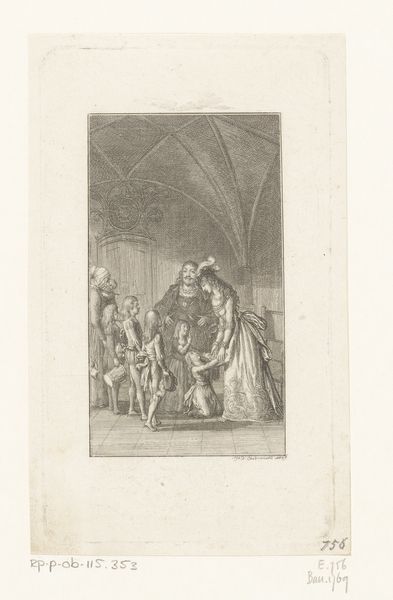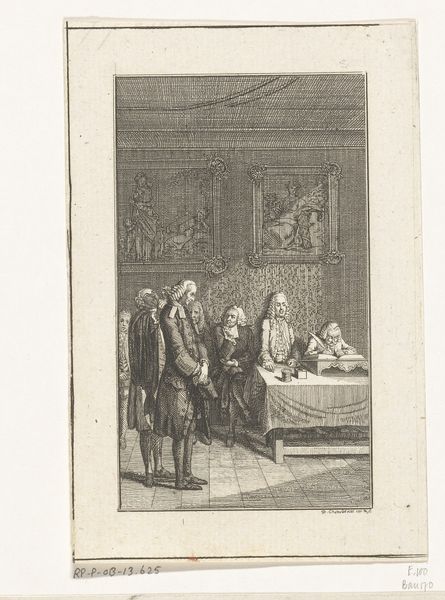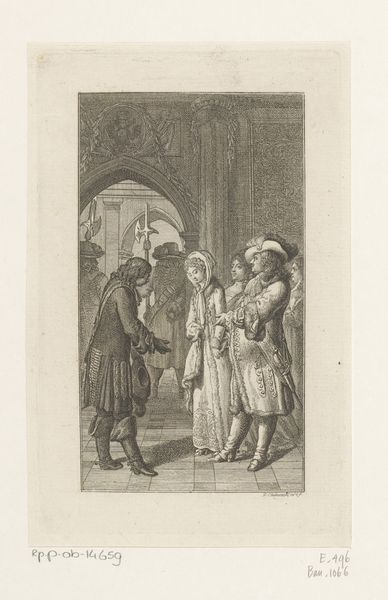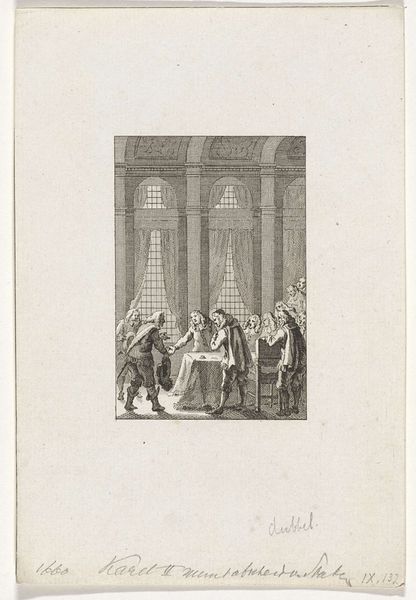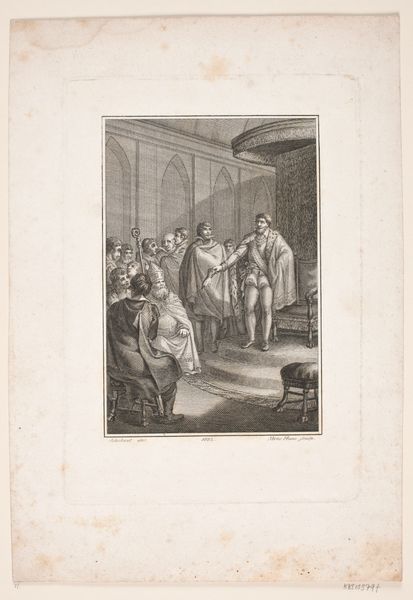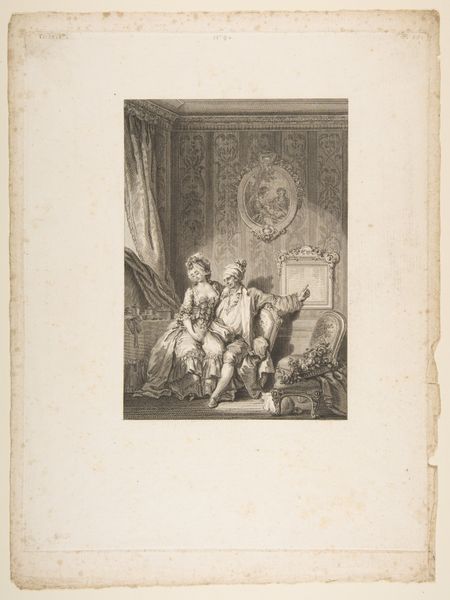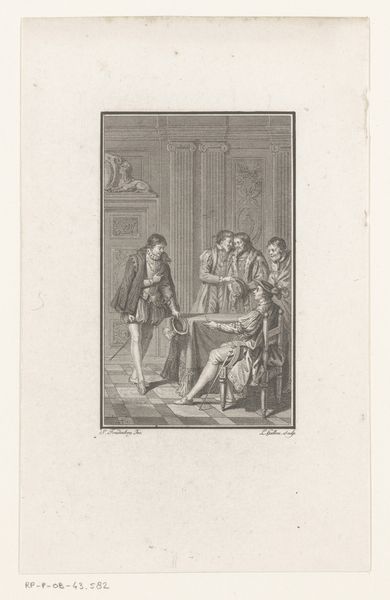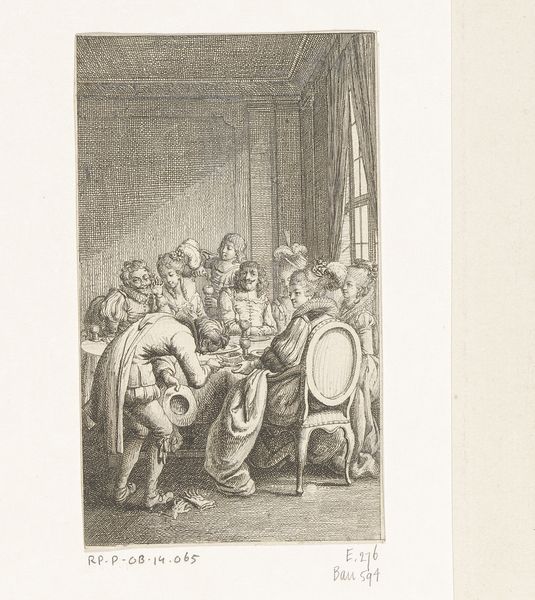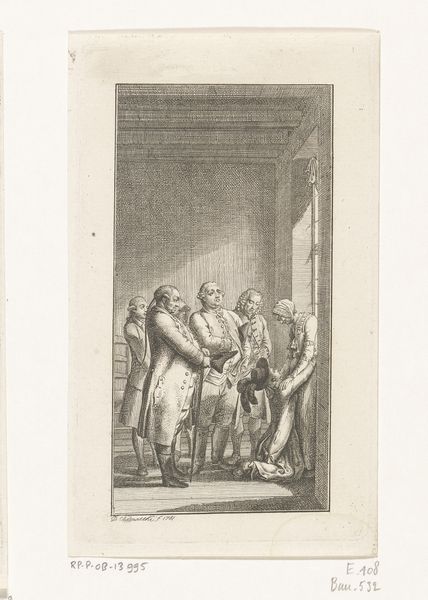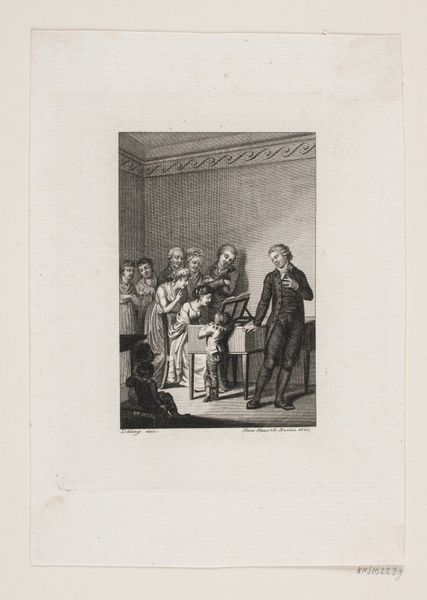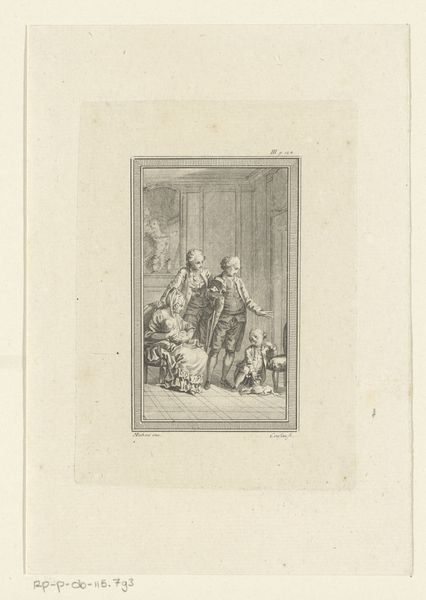
Dimensions: height 224 mm, width 136 mm
Copyright: Rijks Museum: Open Domain
Curator: This print by Daniel Nikolaus Chodowiecki, titled "Graaf van Sayn voor de inquisitie" or "Count of Sayn before the Inquisition," was created in 1798 and currently resides in the Rijksmuseum. It depicts, quite starkly, a historical moment. Editor: Yes, my initial reaction is one of stark dread. The central figure, almost entirely devoid of clothing, stands exposed before a tribunal, creating a visual hierarchy that emphasizes his vulnerability. The cool tones and meticulous lines only heighten the tension. Curator: Indeed. The scene is loaded with symbolic weight. The count, stripped bare, symbolizes the loss of power and worldly status. The men surrounding him in dark robes clearly represent institutional authority, their faces inscrutable. It's the moment when personal identity confronts immutable power. Editor: Absolutely. It’s a power dynamic visualized. What's especially troubling is how the artist stages the gaze. Many figures within the frame look down upon the count as two men violate him with razors to shear his hair. It subtly speaks to societal structures of domination. Curator: Right, and if we consider the historical context, it gains another layer. The Inquisition represents a very particular form of oppression, rooted in religious dogma and control. To see the count in this position evokes fear but also, perhaps, a cautionary tale about resisting institutional injustice. Editor: The print, while small in scale, becomes a potent reminder of historical and ongoing power imbalances. I am reminded how bodies, particularly marginalized ones, have historically been controlled and monitored for simply failing to adhere to existing dogma. Curator: And there's a striking parallel between the visible scene and the smaller, seemingly unrelated vignette underneath it; one can interpret the isolated kneeling figure, on trial within nature, as reinforcing a concept of inherent vulnerability and pleading to higher authorities, if not society. Editor: What remains unsettling for me is how the piece engages with collective memory of this scene as well as what this imagery suggests when viewed today in terms of current discussions surrounding abuse, agency, and institutional critique. Curator: The piece ultimately serves as an evocative icon of the past, holding multiple layers of narrative related to our constant struggles surrounding justice. Editor: A stark visual reminder that questions about power and autonomy remain enduringly relevant today.
Comments
No comments
Be the first to comment and join the conversation on the ultimate creative platform.
